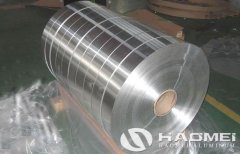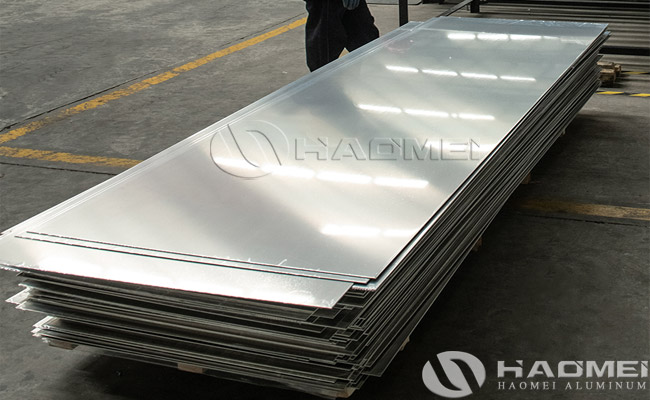-
- News Center
- Related News
-
- Copolymer Coated Aluminium Tape
- 2015 Haomei Annual Meeting of the New Year

- Copolymer coated alum
-
- Home > News > Company news >
- Aluminium Plain Sheet
Aluminium plain sheet refers to aluminum sheet that has not undergone extensive processing such as anodizing, mirror polishing, or color coating, retaining its natural metallic texture and basic properties. Plain aluminium sheet is a rectangular sheet processed from aluminum ingots or aluminum alloy billets through a rolling process. Its thickness typically ranges from 0.2 mm to 200 mm, its width is greater than 200 mm, and its length can reach up to 16 meters. It is primarily made of pure aluminum (1000 series) or low-alloy aluminum (such as 3000 series and 5000 series). Its surface exhibits a natural metallic luster, and some products are oiled to prevent oxidation during transportation and storage.

Core Classification of Aluminum Plain Sheet:
1. Based on alloy composition:
- 1000 Series Industrial Pure Aluminum:
Aluminum content ≥ 99.0%. Typical grades include 1050 (99.5% aluminum), 1060 aluminum (99.6%), and 1100 (99.0%). This type of aluminum sheet features high purity, excellent corrosion resistance, and ease of processing. It is widely used in applications requiring low strength, such as electronics, food packaging, and chemical containers.
- 3000 series aluminum-manganese alloys:
Represented by 3003 aluminum, contain 1.0-1.5% manganese and offer excellent rust resistance. They are commonly used in humid environments such as air conditioners, refrigerators, and vehicle undercarriages, as well as in structural parts requiring medium strength.
- 5000 series aluminum-magnesium alloys:
Such as 5052 aluminum (containing 2.2-2.8% magnesium), offer low density and high tensile strength, making them suitable for applications requiring lightweighting and corrosion resistance, such as automotive fuel tanks and ship sheet metal.
2. By Processing Technology:
- Hot-rolled aluminum sheet:
Produced through high-temperature rolling, typically has a thickness of 3 mm or greater and a high surface roughness. It is suitable for structural parts requiring less precise surface finish.
- Cold-rolled aluminum sheet:
Produced at room temperature, can be as thin as 0.2 mm, offering even greater surface flatness and precision. It is commonly used in applications requiring high surface quality, such as electronics and packaging.
3. Classification by Condition:
- H Condition (Work Hardened Condition):
Such as H12 (work hardened followed by partial annealing) and H14 (high work hardening), this condition increases strength through cold working and is suitable for parts requiring a certain degree of hardness.
- O Condition (Annealed Condition):
Fully annealed, exhibits optimal plasticity and is suitable for deep drawing or complex forming processes.
Production Process
The production process for plain aluminium sheet includes:
- Smelting and Casting: Aluminum ingots and alloying elements are melted and then cast into billets.
- Rolling: Billets are formed through hot rolling, followed by gradual thinning to the target thickness through cold rolling. Annealing may be interspersed during this process to relieve stress.
- Finishing: This includes shearing, straightening, and oiling to ensure dimensional accuracy and surface quality.
Core Features of Aluminium Plain Sheet:
- Lightweight:
With a density of approximately 2.7g/cm³, only one-third that of steel, it significantly reduces the weight of equipment or structures.
- Corrosion Resistance:
The naturally formed oxide film on the surface resists atmospheric corrosion and is stable in neutral or slightly acidic environments, but requires additional protection in strong acidic, alkaline, or high-salt environments.
- Machinability:
Complex shapes can be formed through stamping, bending, welding, and other processes, meeting diverse design requirements.
- Recyclability:
Aluminum recycling consumes only 5% of the energy required to produce primary aluminum, with minimal performance loss, aligning with the trend toward green manufacturing.
- Electrical and Thermal Conductivity:
Pure aluminum has an electrical conductivity approximately 61% of copper, making it widely used in electrical and heat exchange applications.
Typical Applications of Aluminum Plain Sheet:
- Construction:
Roofs, walls, ceilings, and other structural components (1100 and 3003 aluminium alloys).
Curtain wall frames and decorative moldings (5052 aluminium alloy).
- Industrial Manufacturing:
Chemical equipment, pipelines, and pressure vessels (3003 aluminium alloy).
Automotive fuel tanks, radiators, and body structural components (5052 aluminium alloy).
- Packaging:
Cans (3004 alloy) and food and pharmaceutical packaging foil (1060 aluminium alloy).
- Electronic and Electronics:
Transformer windings and distribution cabinet busbars (1060 and 1050 aluminium alloys). Electrical housings and heat sinks (1100 aluminium alloy).
Plain aluminium sheet, due to its comprehensive performance and cost-effectiveness, has become a fundamental material in the construction, industrial, and packaging sectors. With the advancement of lightweighting and green manufacturing trends, its application in emerging industries such as new energy vehicles and photovoltaics will continue to expand.-
- pre:pre:High Quality ASTM B209 Aluminum Plate
- Next:next:Copolymer Coated Aluminium Tape
- Haomei aluminum
- haomei Aluminium Plate




